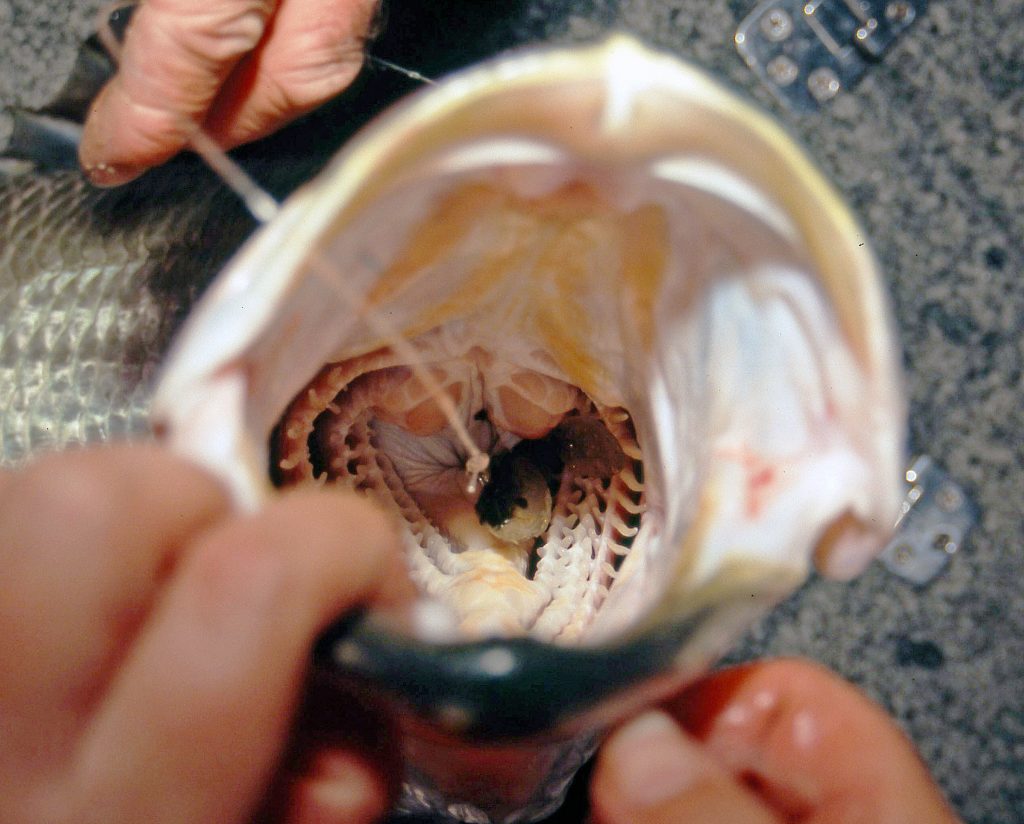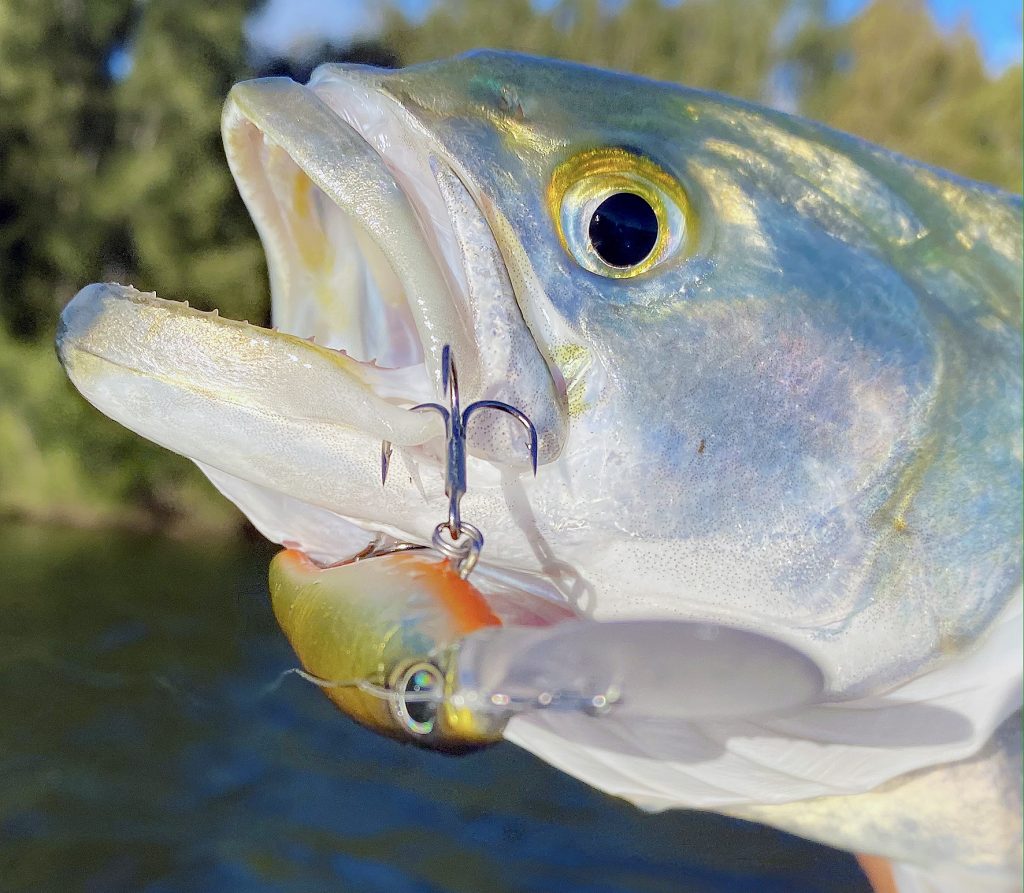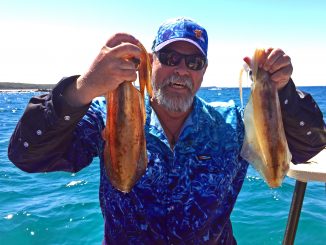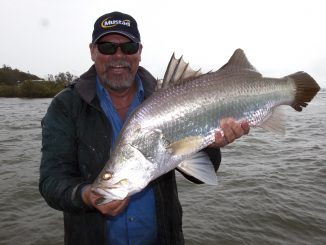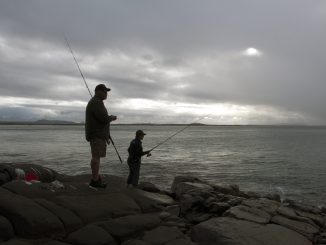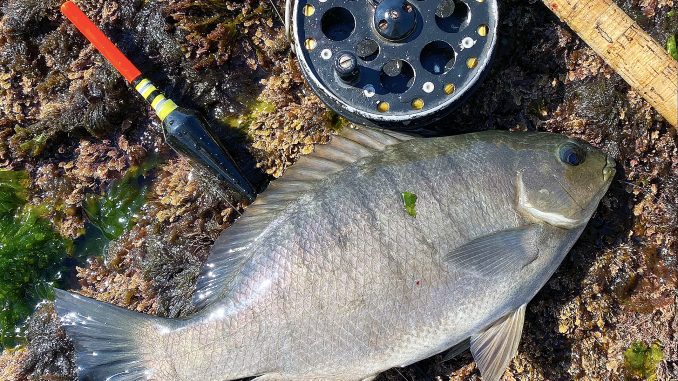
• by Steve ‘Starlo’ Starling
Since the advent of braided lines, leader selection and construction has become an increasingly important consideration for anglers.
In the pull-out Tackle Extra of this issue of Fishing Monthly, Steve Morgan and his wonderful team present the findings of an exhaustive shoot-out or comparison test that they recently conducted on a bunch of popular brands of fluorocarbon leader materials, all with rated strengths of 20lb breaking strain. The results are fascinating, and well worth a close look. (There’s also a terrific video clip on the Fishing Monthly Magazines channel on YouTube explaining exactly how this detailed comparison test was conducted.)
But this in-depth shoot-out begs an obvious question: why is there so much interest in leader materials?
Today, a majority of keen Aussie anglers choose to use braided or fused gel-spun polyethylene (GSP) main lines for at least some of their fishing. They do so because these thin-for-strength and low-stretch multifilament lines offer distinct advantages in terms of casting ability, bite detection, hook-setting power and fish fighting muscle. Braid has a lot going for it. However, one of the downsides of GSP or braid is the fact that its use practically demands the addition of a leader.
There are a couple of very good reasons why it’s almost mandatory to use a monofilament leader made of either nylon or fluorocarbon when running braided main lines: Firstly, while braided GSP line is very durable and hard wearing when dealing with smooth surfaces like reel spools, rod runners, bail rollers and clean boat hulls, it abrades quickly when it comes into contact with rougher surfaces, especially under pressure. Because of the way they’re constructed – using thousands of very fine fibres known as ‘angel hairs’ – multi-strand lines quickly lose strength and fail when abraded.
Tying braid straight to your hook or lure exposes the last metre or two of line to all sorts of damaging contacts with rocks, oysters, snags, pylons and so on, and that’s before a fish ever gets involved in the equation. Fine, sharp fish teeth such as those found in flathead or Murray cod are kryptonite to braided lines, especially when the fish that owns them begins violently shaking its heads. The same goes for species with rock-hard, sandpaper jaws, like barra, queenfish and threadfin salmon, to name a few.
But there are more reasons beyond abrasion resistance for always using a leader with braided lines. As thin as braids are for their strength, most are also opaque. In other words, light doesn’t pass through them. This can potentially make these lines more visible to fish. Adding a leader of nylon or fluorocarbon, is the best way to separate these solid, visible, multi-strand lines from your bait, lure or fly.
The best leader materials are generally clear and not too glossy. Their clarity allows light to pass through, reducing visibility and the creation of shadows, while a low gloss finish minimises the incidence of flashing in bright sunlight. As a bonus, fluorocarbon leaders like the ones recently tested by the Fishing Monthly crew have a “refractive index” quite close to that of water, which means they are even harder to see beneath the surface. This is a bonus.
A third and final reason for always using a mono leader (nylon or fluorocarbon) when running braid is related to the very low stretch of gel-spun lines. In many cases, it can actually be an advantage to incorporate a small amount of stretch into your rig, and using a monofilament leader is the easiest way to do that.
Having a slight ‘cushion’ or ‘spring’ in the form of a few metres of relatively stretchy leader material at the business end of your rig can be a real bonus, especially in the closing stages of a fight, when there’s only a short length of line between angler and fish.
So, we need to use leaders when fishing with braid, but we also need to be choosy about the leader material we select, as it represents a vital link between us and any hooked fish. For this reason, I’d urge you to carefully study the leader shoot-out in this issue and watch that great YouTube clip that accompanies it… It’s illuminating!


